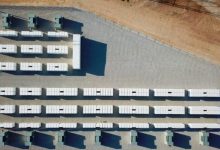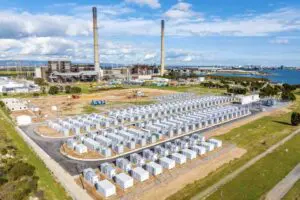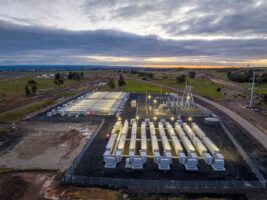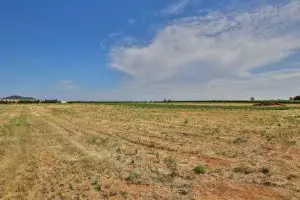Amid the dense fog of political and regulatory inertia, it would be easy to get despondent about the state of Australia’s energy system and its prospects for a clean energy transition. Many do.
All, however, is not lost. Signs are that the policies put in place by the previous Labor government before it lost power more than six years ago, and the technologies it and state governments have encouraged to the market place, are now starting to have a positive impact: Australia’s main grid is now cleaner, and getting cheaper and smarter too.
The latest Quarterly Energy Dynamics report released by the Australian Energy Market Operator last week, along with a similar update published on Friday by the Australian Energy Regulator point to significant changes in the grid over the September quarter.
Emissions are clearly coming down, and in some states (those with biggest gains in renewables) prices are lower than they have been for more than three years. Even better, we are seeing how new technologies, and new thinking, that are helping make the grid smarter, and ultimately more resilient.
First, and most significantly, emissions in the electricity sector continue to fall, and are now at a record low, thanks to the increase in wind and solar generation, and the decrease in coal generation.
According to AEMO, emissions from the grid were at a record low both in terms of absolute emissions and average emissions intensity, which at 0.71 tonnes of CO2 equivalent per megawatt hour produced was around 5 per cent lower than the previous lowest quarter, three months earlier.
These emissions levels will continue to fall as the current pipeline of wind and solar projects under construction and not yet completed commissioning join the market. The graph above highlights that the only rise in emissions on the NEM was in the year that the Coalition killed the carbon price, which encouraged more coal to generate.
But the growing amounts of wind and solar – largely due to the renewable energy target that the Coalition tried to kill, but only succeeded in reducing – is pushing coal out and lowering emissions, and rooftop solar has also played a critical role.
The added good news is that there are now signs that wind and solar are having a positive impact on prices too as the fossil fuel generator grip on the markets is loosened.
 In South Australia and Queensland, electricity prices have fallen to their lowest levels since early 2016 (See graph above).
In South Australia and Queensland, electricity prices have fallen to their lowest levels since early 2016 (See graph above).
And prices have fallen even further since then in the renewable state of South Australia, which now sources more than 50 per cent wind and solar and which recorded the lowest prices in the grid in October. In the first half of November its prices were around half of that in most other states.
 In Queensland, the average price of electricity in the wholesale market at midday was pushed to just above zero. That’s the average, over a three month period. The cause was relatively low demand, and a lot of solar output.
In Queensland, the average price of electricity in the wholesale market at midday was pushed to just above zero. That’s the average, over a three month period. The cause was relatively low demand, and a lot of solar output.
Victoria still suffers from high wholesale prices, because it still is in the process of replacing Hazelwood, and most of its large wind generation is yet to come on line. It is also plagued by repeated outages at its remaining coal generator and four of its five big solar farms have had their output cut in half while newly discovered “system strength” issues are resolved.
During the quarter, according to AEMO, there were several significant milestones:
There were record outputs of wind 4,738MW at 2000 AEST August 10.
Record outputs of solar of 2210MW on September 29 at 1400 AEST. Look at the graph above to see the dramatic increase in the average output of large scale solar after the last two years.
The combined output of wind and solar hit a record high of 5,896MW on August 9, and a record share of output (more than 30 per cent for first time) on August 24.
 The quarterly output of brown and black coal hit its lowest record since the start of the National Electricity Market more than two decades ago.
The quarterly output of brown and black coal hit its lowest record since the start of the National Electricity Market more than two decades ago.
The average output of brown coal generation was at its lowest ever, largely due to unplanned outages because of problems with the ageing and increasingly fragile plants.
There were record low levels of operational demand in both South Australia and Western Australia, partly due to mild weather, partly to the increased amount of rooftop solar, which will add close to 2GW this year after adding 1.6GW last year.
All these records will be broken again in the coming year as more wind and solar comes on to the grid. The graph above shows the average changes in the grid, indicating the major reshaping of output.
The AER notes that since July 2017, more than 3000MW of large scale solar and 2500MW of wind generation capacity has entered the marker. Of the new solar capacity, over half is located in Queensland.
Another 3000MW of large scale solar and wind generation capacity is scheduled to enter the market this financial year.
Other features of the last quarter have been the number of negative pricing events in South Australia, Western Australia and Queensland, which will encourage more storage to enter the market.
In South Australia, the rate of negative prices hit 8.4 per cent, and in Queensland 4.5 per cent. Western Australia, which operates on a separate grid, also recorded negative energy prices more than 5 per cent of the time, and its “balancing price” also turned negative for a record number of times.
These negative prices were not entirely due to the amount of excess wind and solar, because grid constraints (usually throttling the amounts of energy that can be exported to a neighbouring state) also had an impact.
As the AER noted, Queensland coal generators bid 71 per cent of their combined capacity at negative prices during the quarter. That’s to ensure they don’t have to switch off or lose their place in the so-called “merit order”. At some stages, just the coal capacity alone bid negative was nearly enough to meet existing demand.
Wind and solar plants have the ability to more easily switch off, but what the negative prices will do is to encourage more storage, and for the existing storage that is now rarely used to be used more often.
One important question was addressed by the AER. Why aren’t consumers seeing cheaper prices as a result of all these negative pricing events.
“For end consumers …. negative wholesale spot prices do not necessarily immediately translate to lower retail prices, as wholesale costs form just one part of a retail electricity bill,” it says.
“Also, risk hedging strategies by electricity retailers insulate consumers from the volatility of the wholesale market. This means changes in wholesale prices typically take some time to flow through to the end consumer.”
Meanwhile, the entry of batteries to the market (albeit as still relatively small levels) is also making the grid quicker and smarter, and starting to take over some of the key system services once the sole province of the coal and gas generators, who liked to game the system and the market like crazy when they had the opportunity.
Smarter technologies like battery storage and “demand side” technologies such as demand management and virtual power plants now account for 40 per cent of the revenue gained from the frequency and ancillary control market.
If you throw in hydro, which has also increased its share, it means that the market share of the fossil fuel generators in this crucial market has fallen from around 60 per cent to less than 40 per cent.
Of course, there are still problems, and hurdles to overcome. Investment in transmission and network infrastructure has fallen behind, and so have the rule changes needed to keep up with the new technologies and changes in the grid.
Too often, we hear of rules and mechanisms that are “no longer fit for purpose”, yet the current political and media discourse is dominated by those who simply don’t understand the technologies and who seek to demonise it at every turn.
And, to be sure, there is concern about this summer. Victoria faces a potentially challenging season, partly because it has not brought all its new wind and solar capacity on line, partly because of the problems occurring at its biggest fossil fuel generators, with numerous unexpected outages and two long term outages affecting units at Loy Yang A (brown coal), and Mortlake (gas).
AEMO says it should have this covered, but what it cannot predict are the so-called “tail risk” events, that could combine a series of days of soaring temperatures and equipment failing. That won’t help the politics.
See also: South Australia’s renewables grid separates from NEM; lights don’t go out















